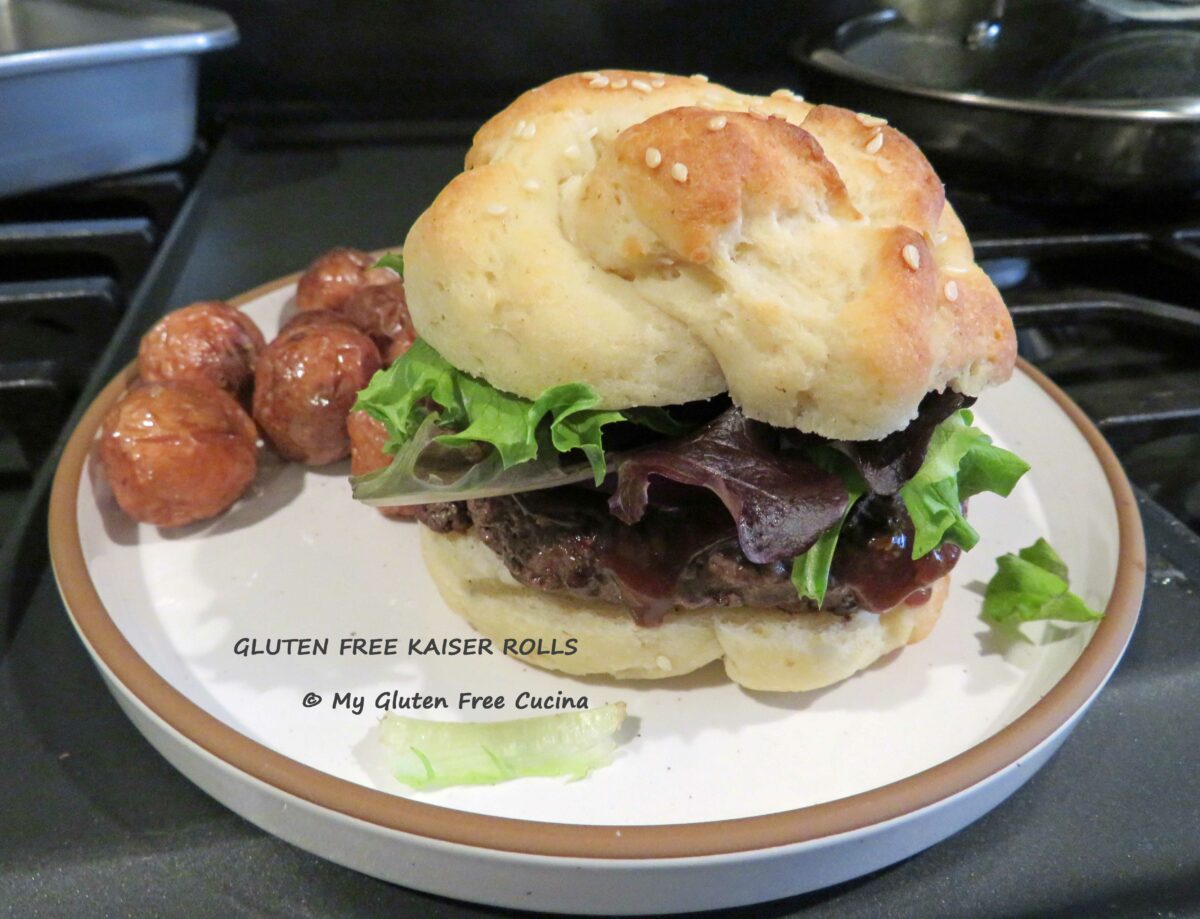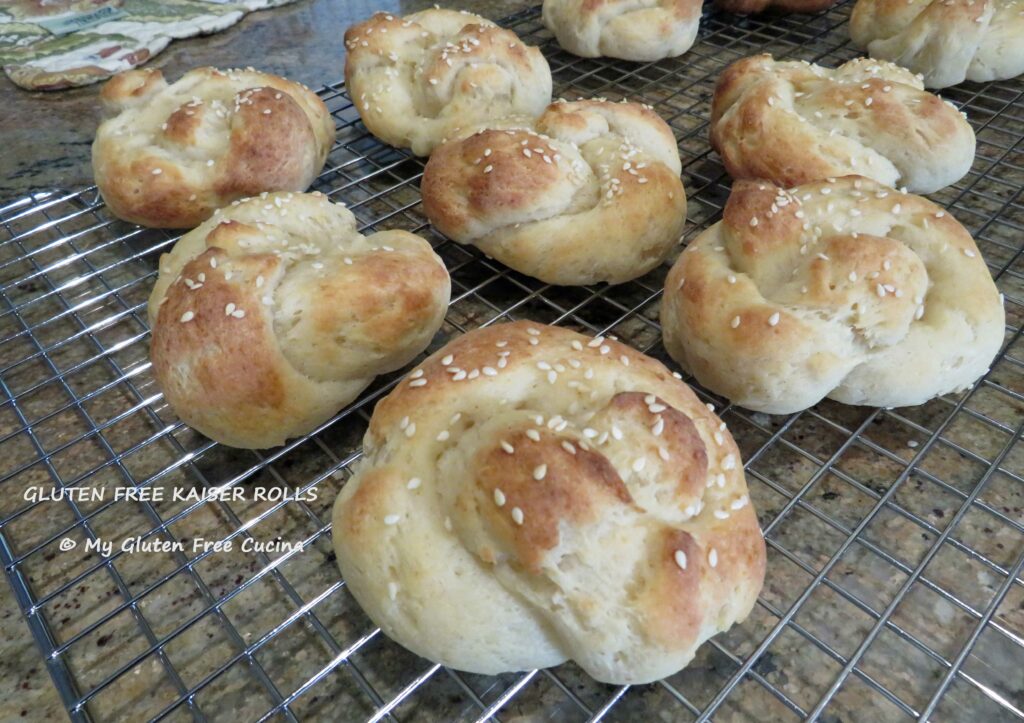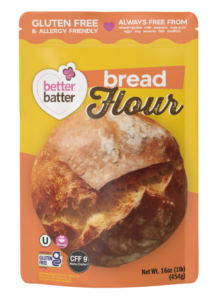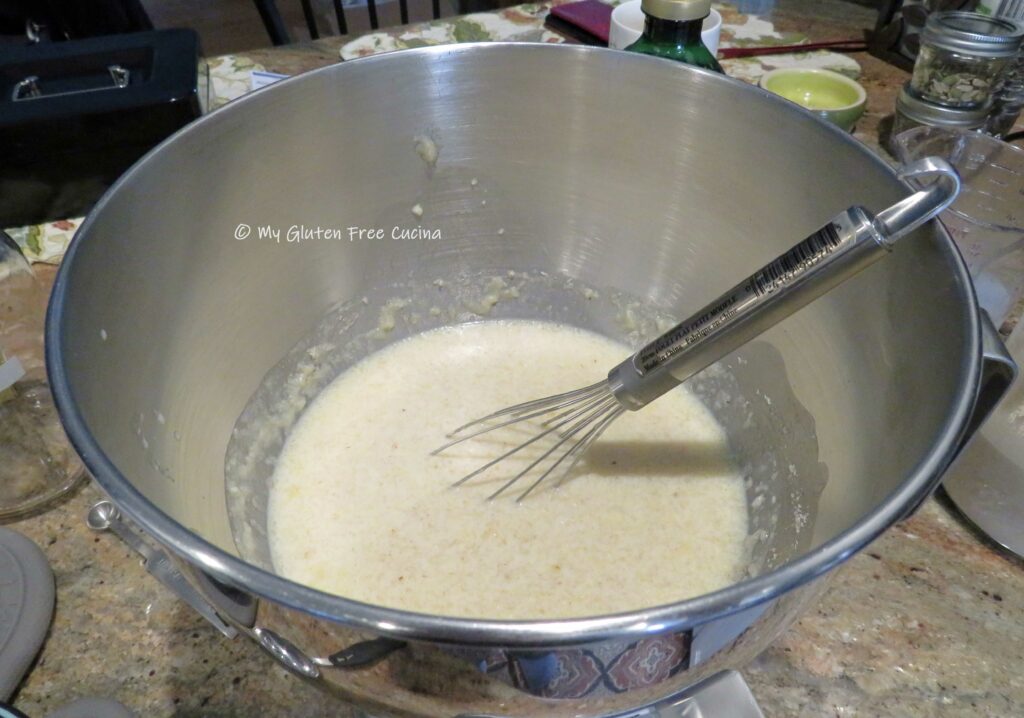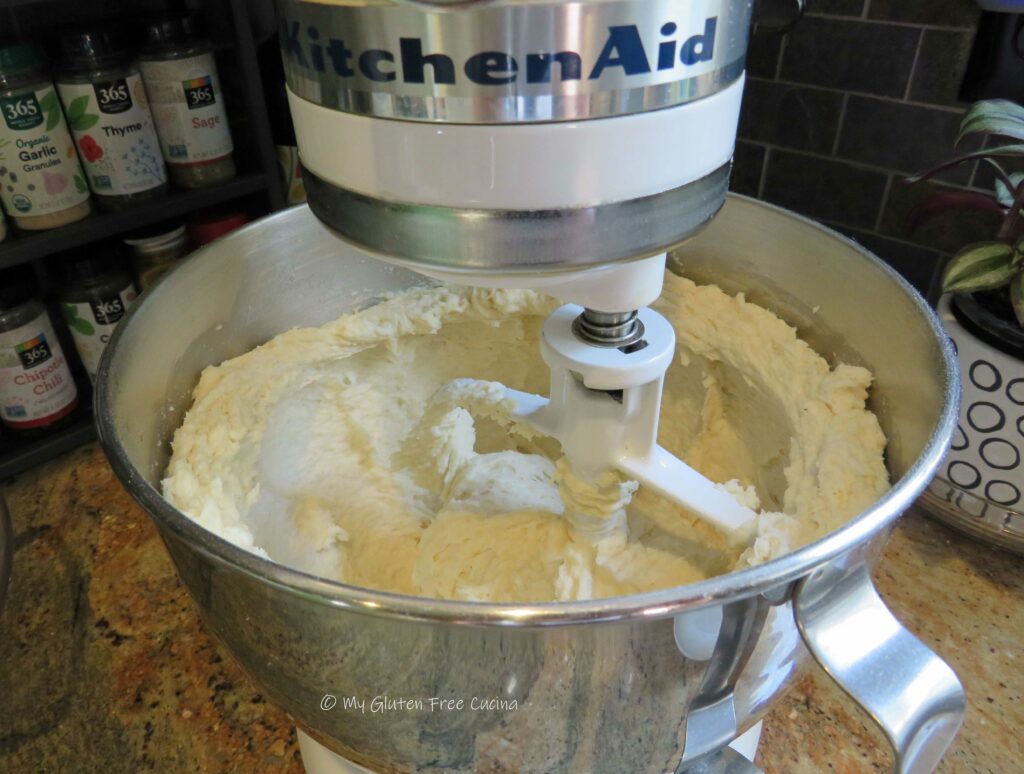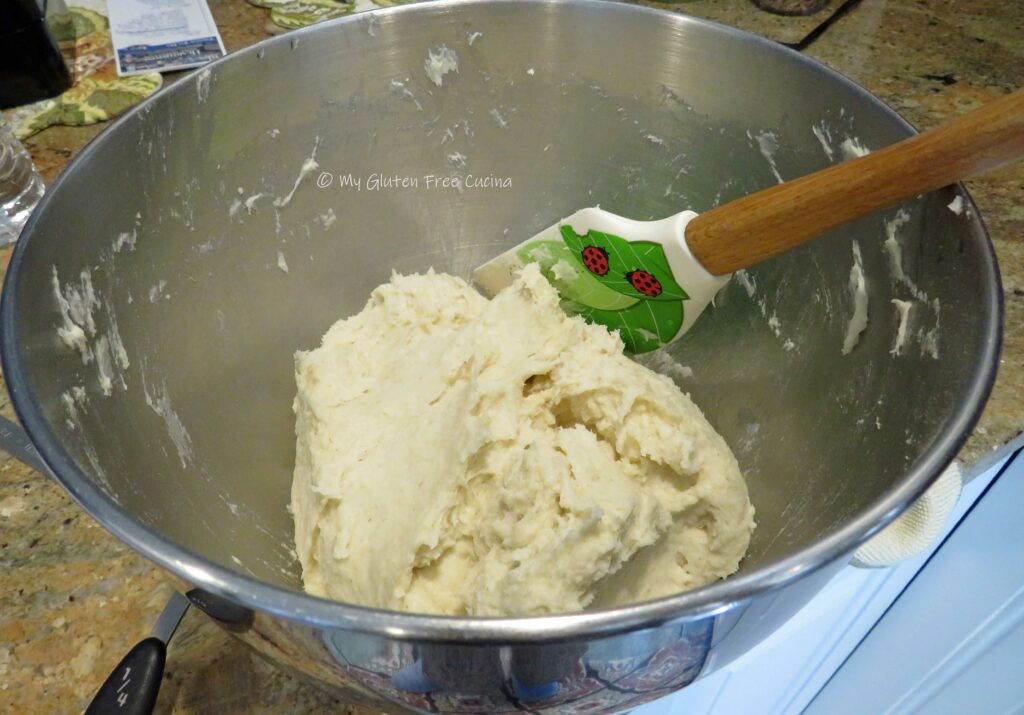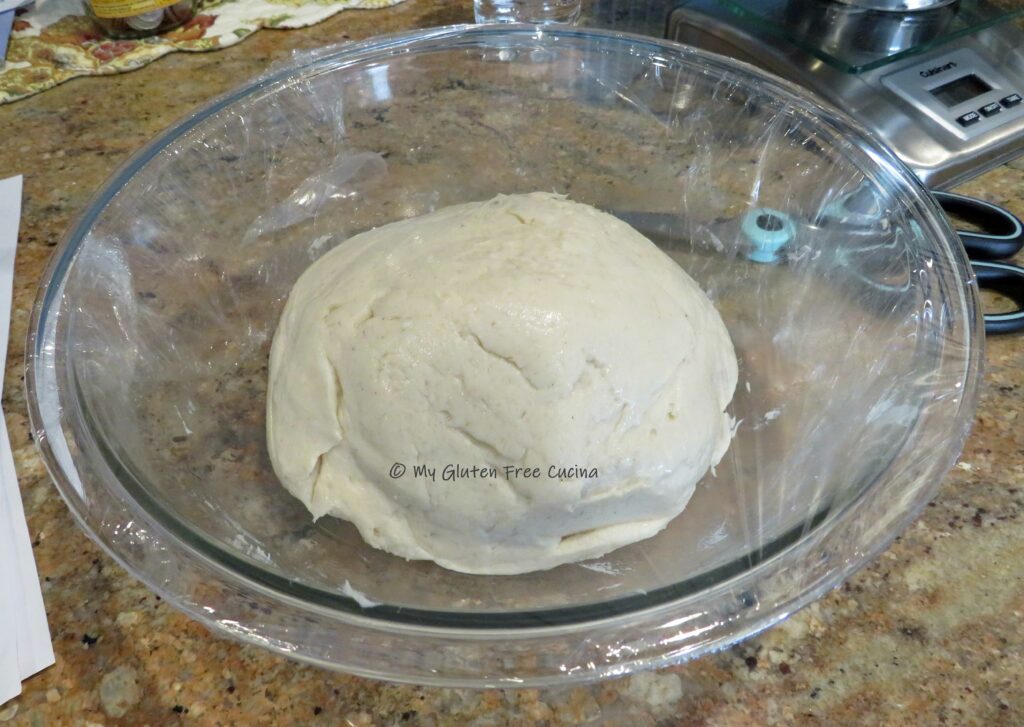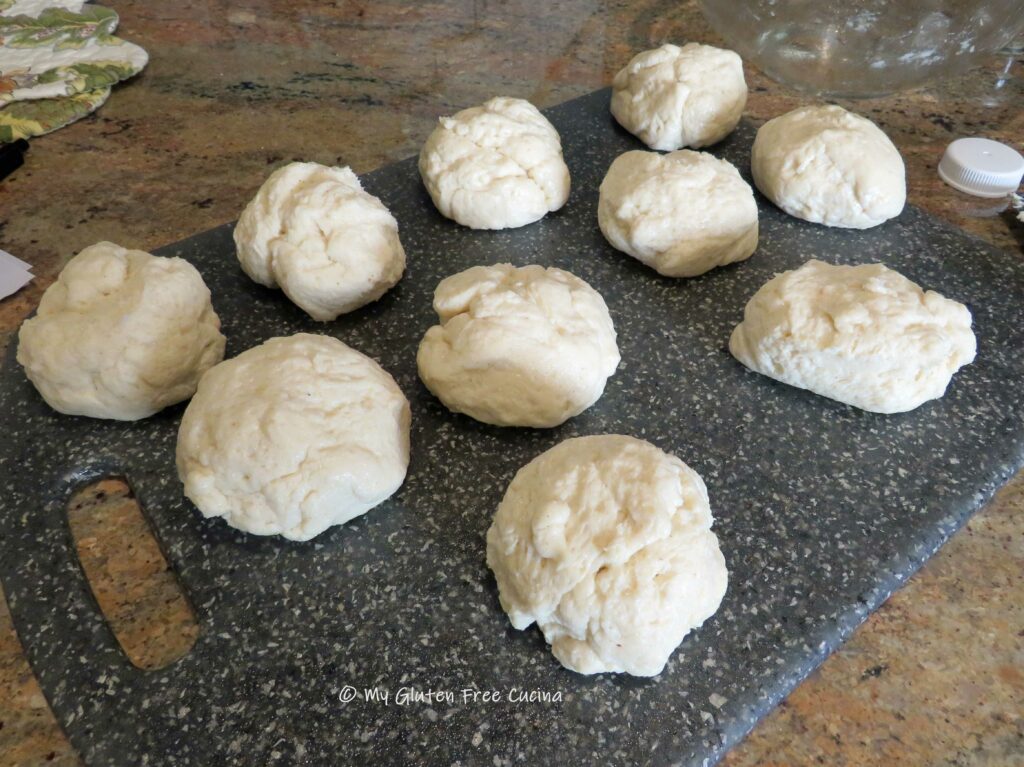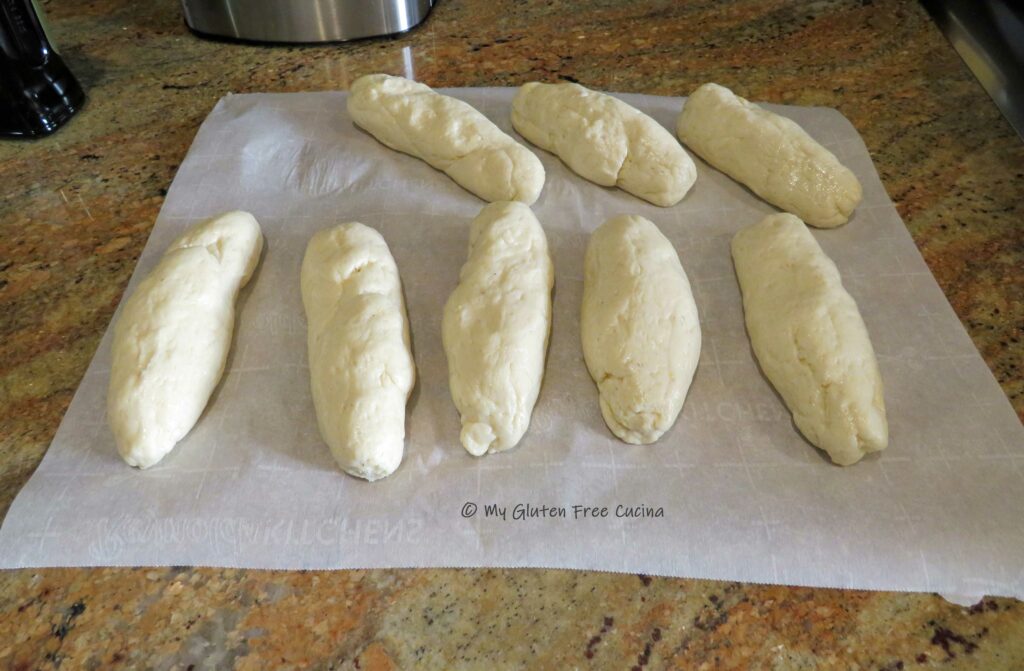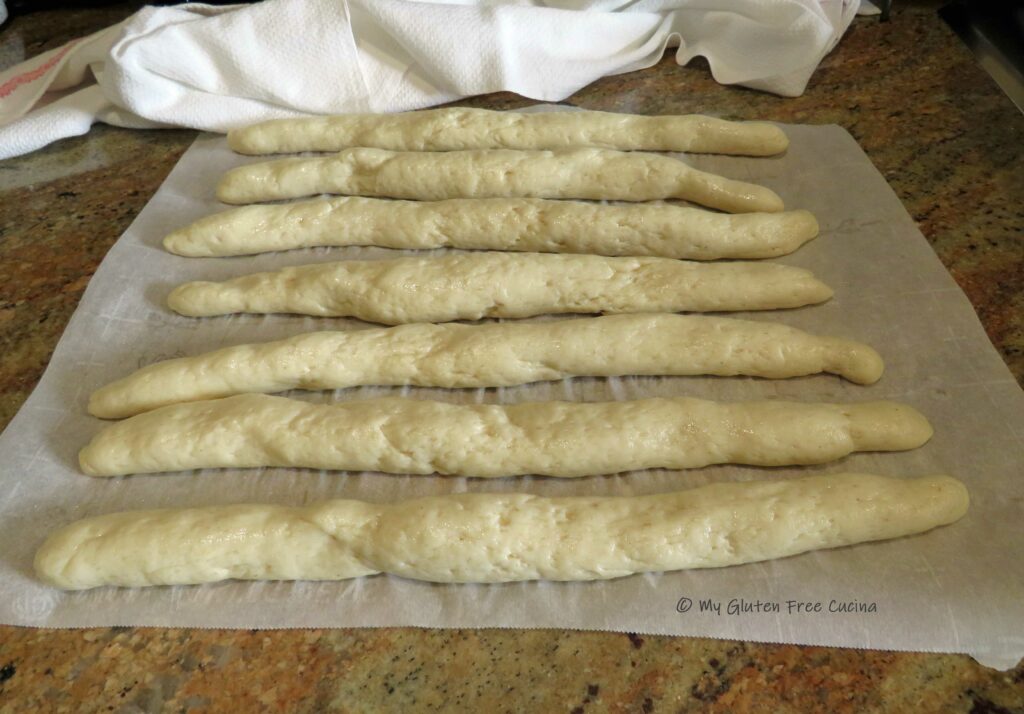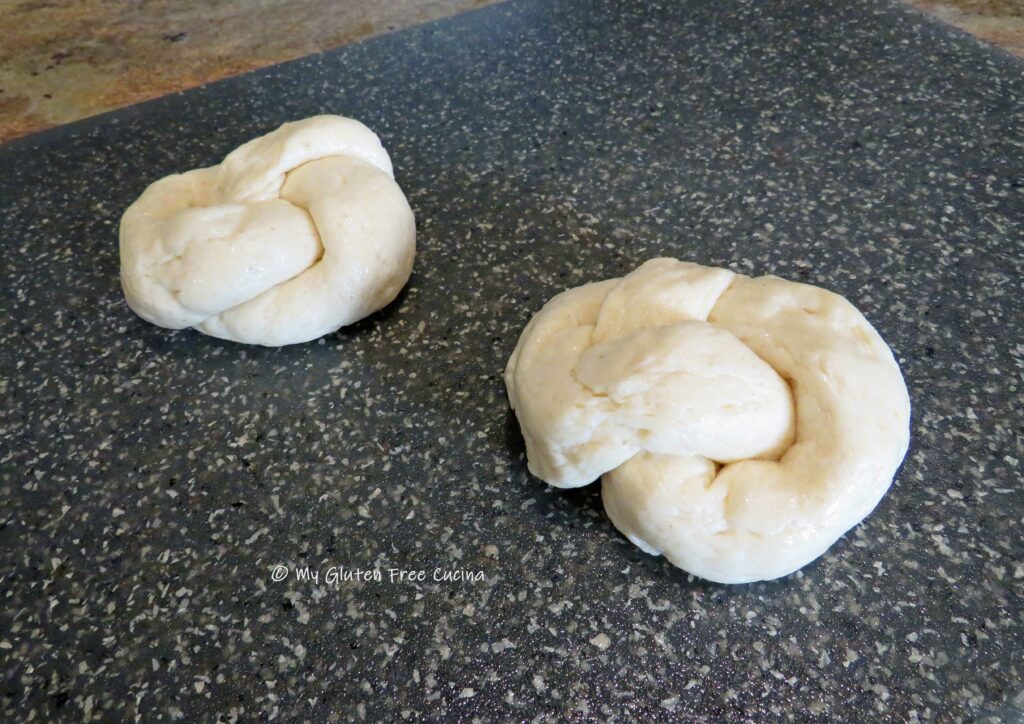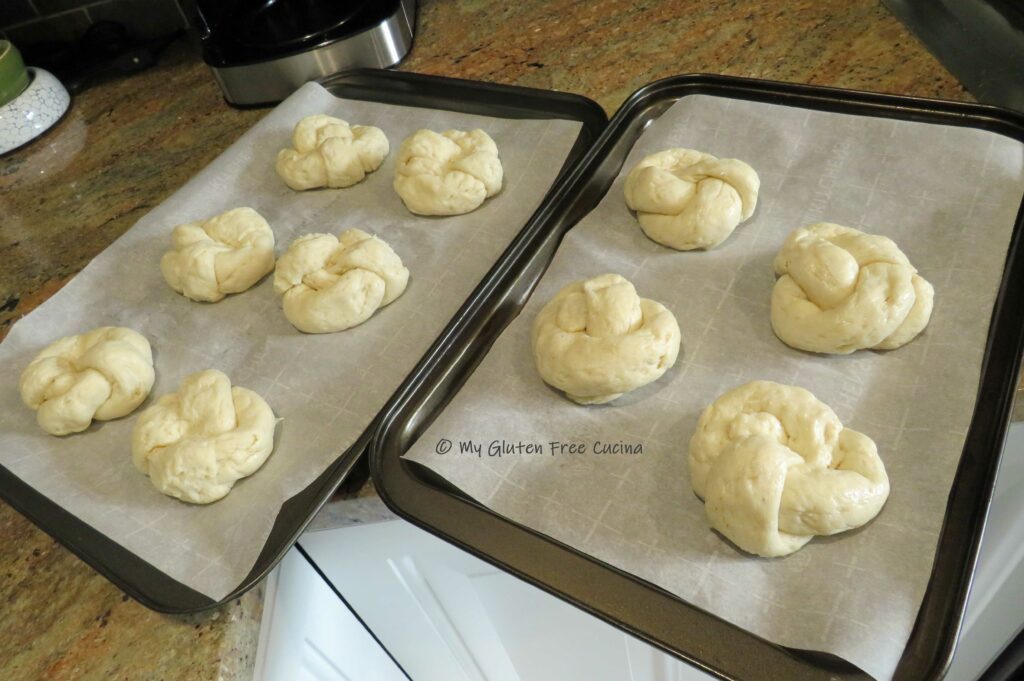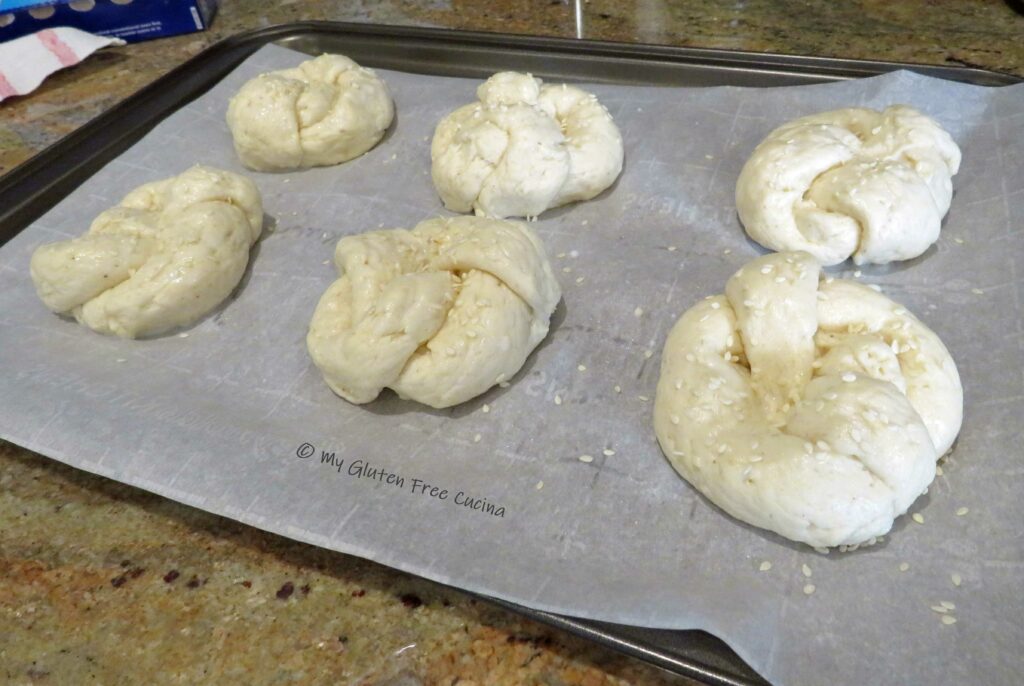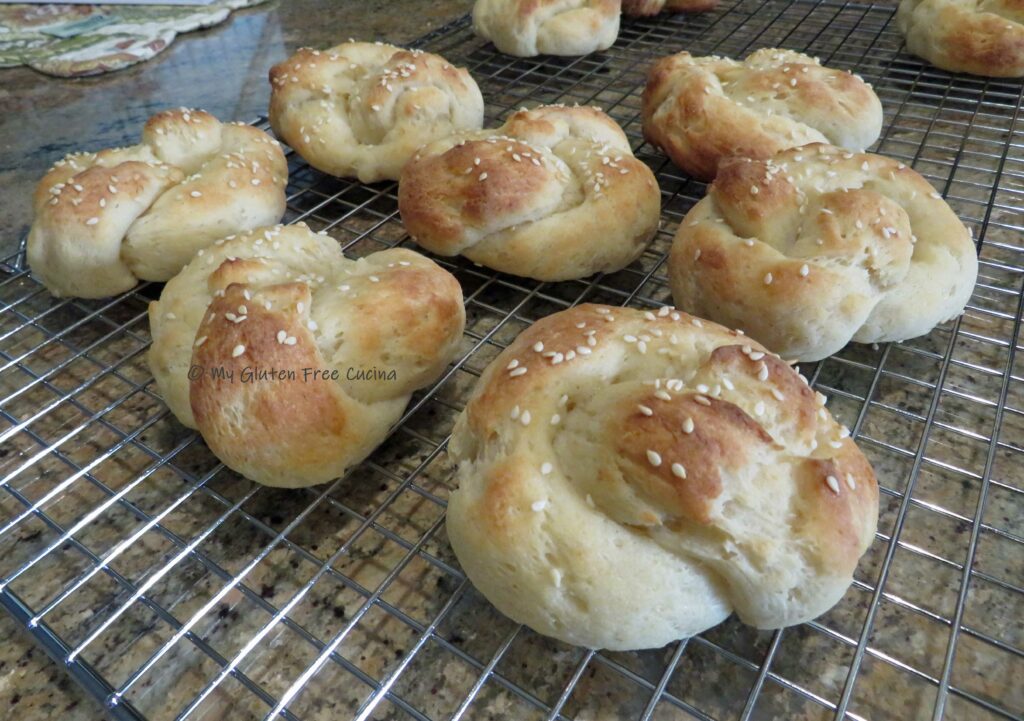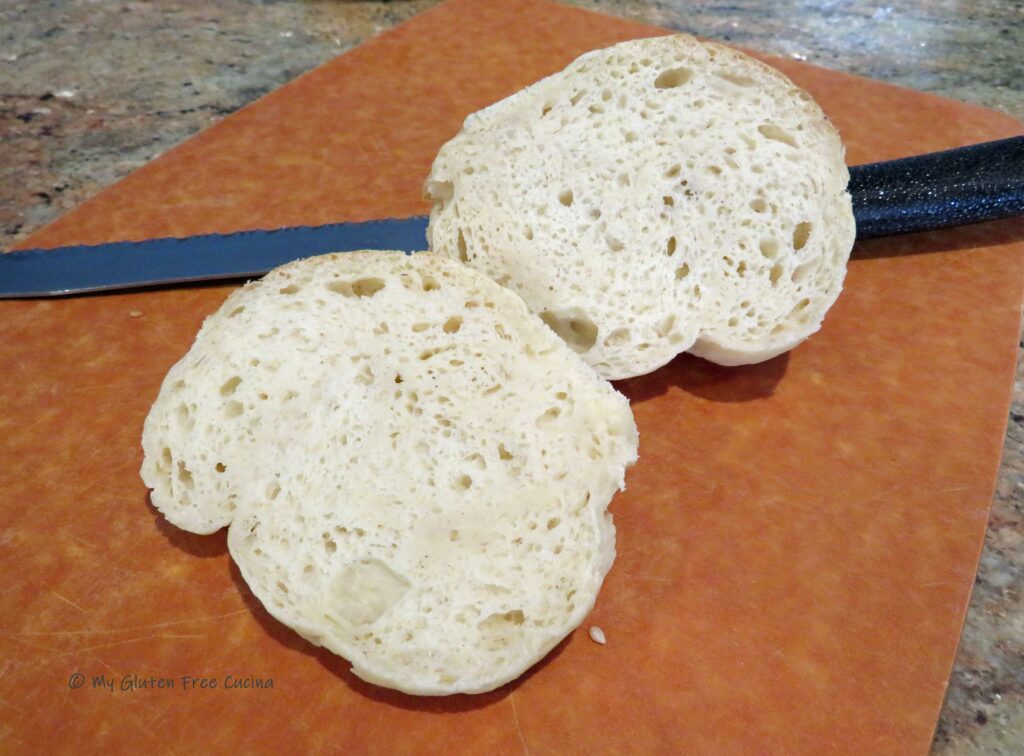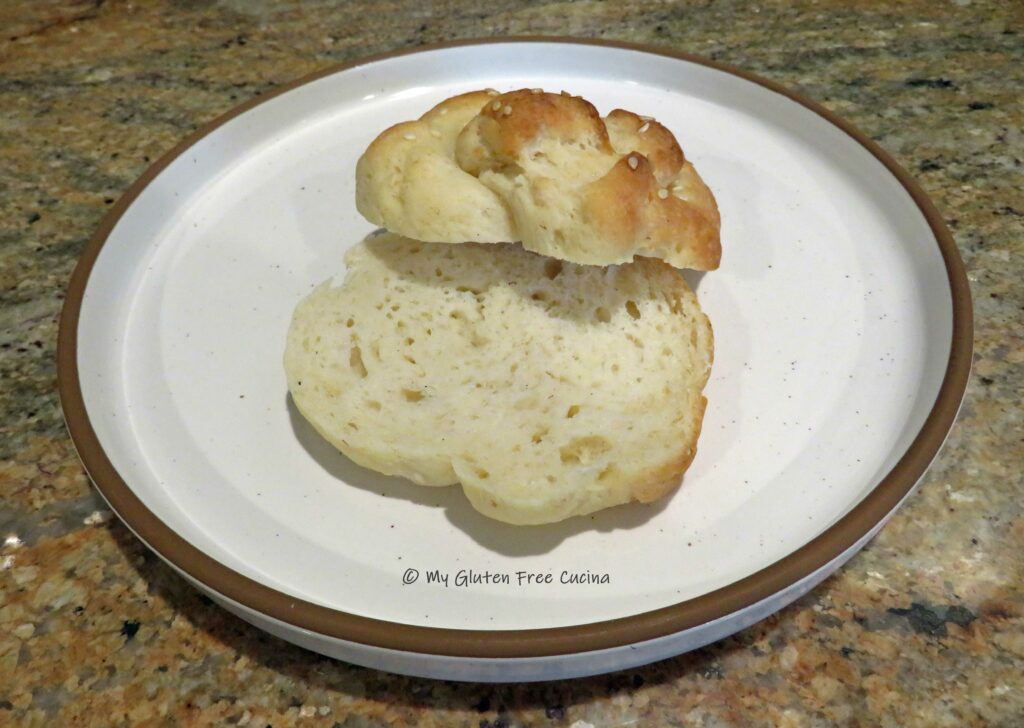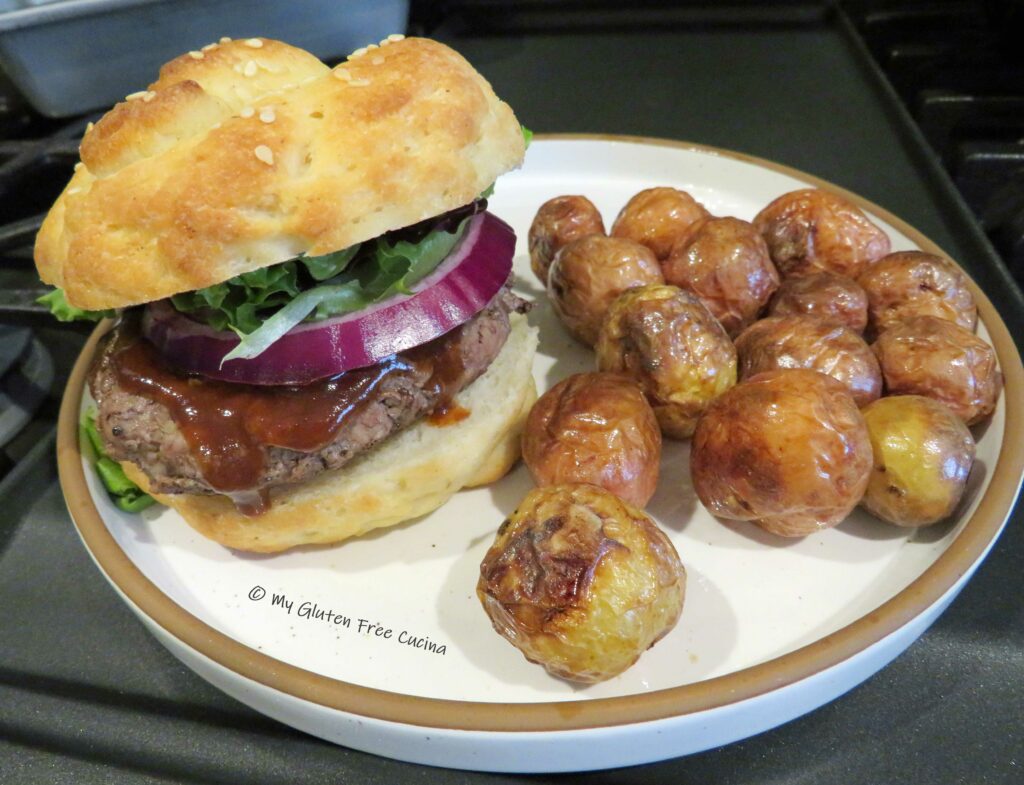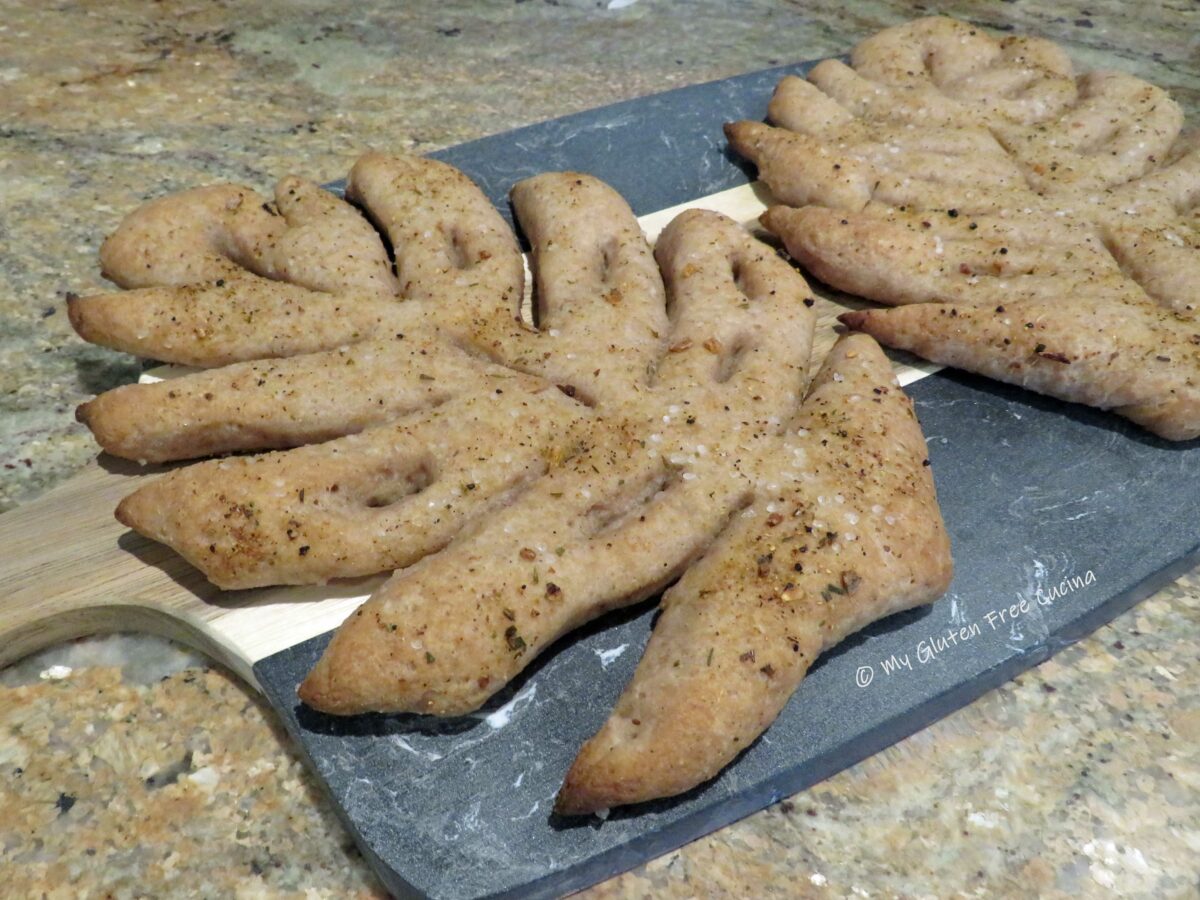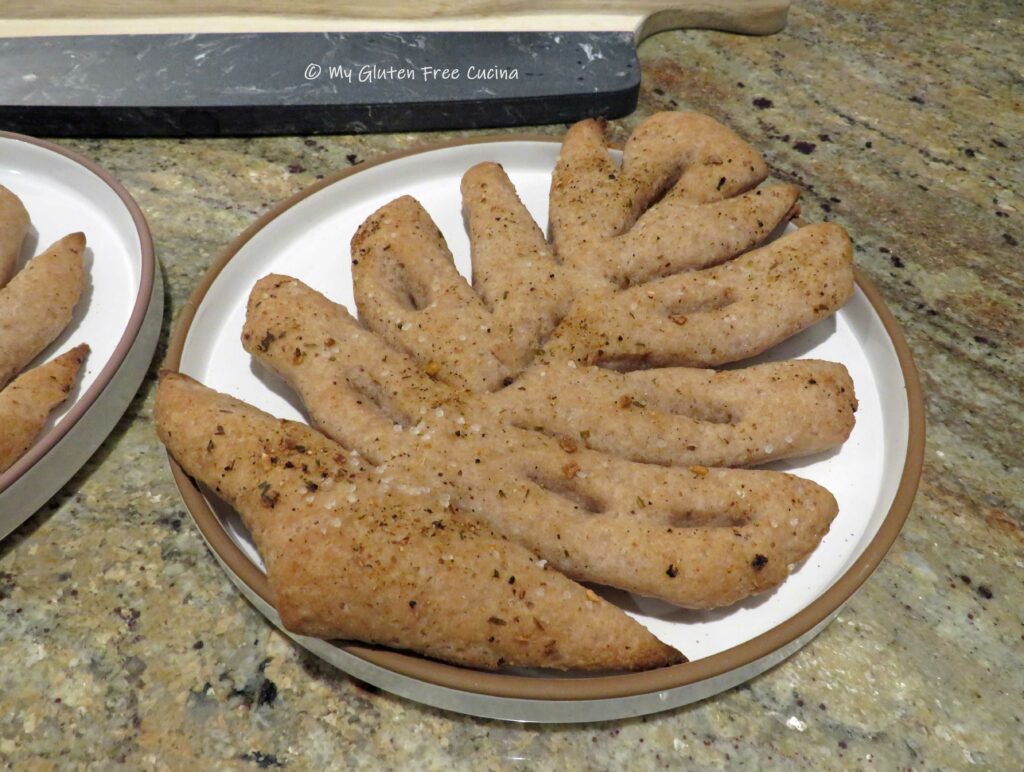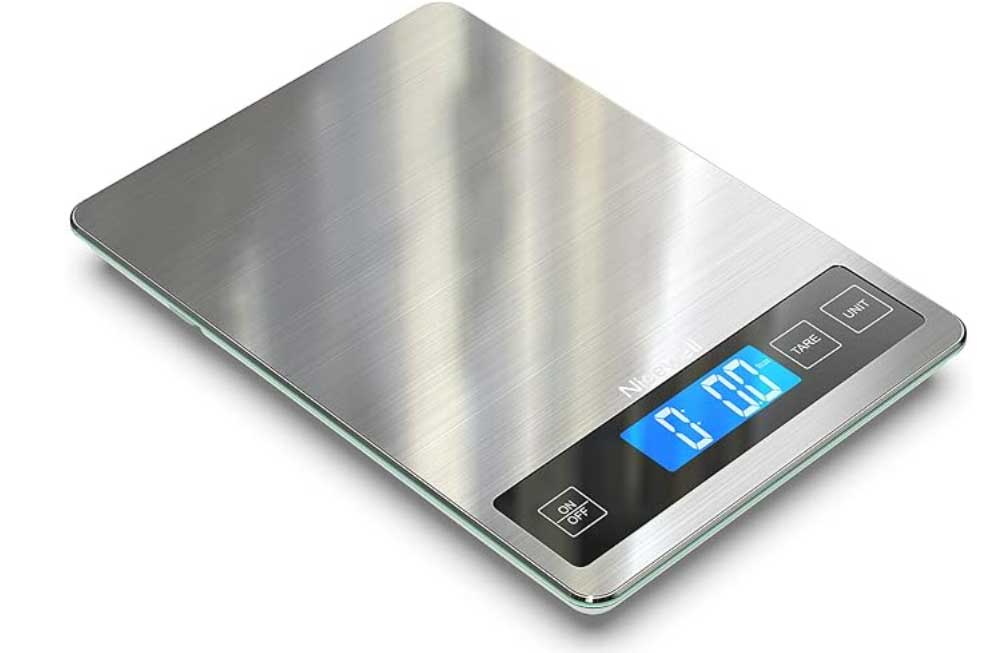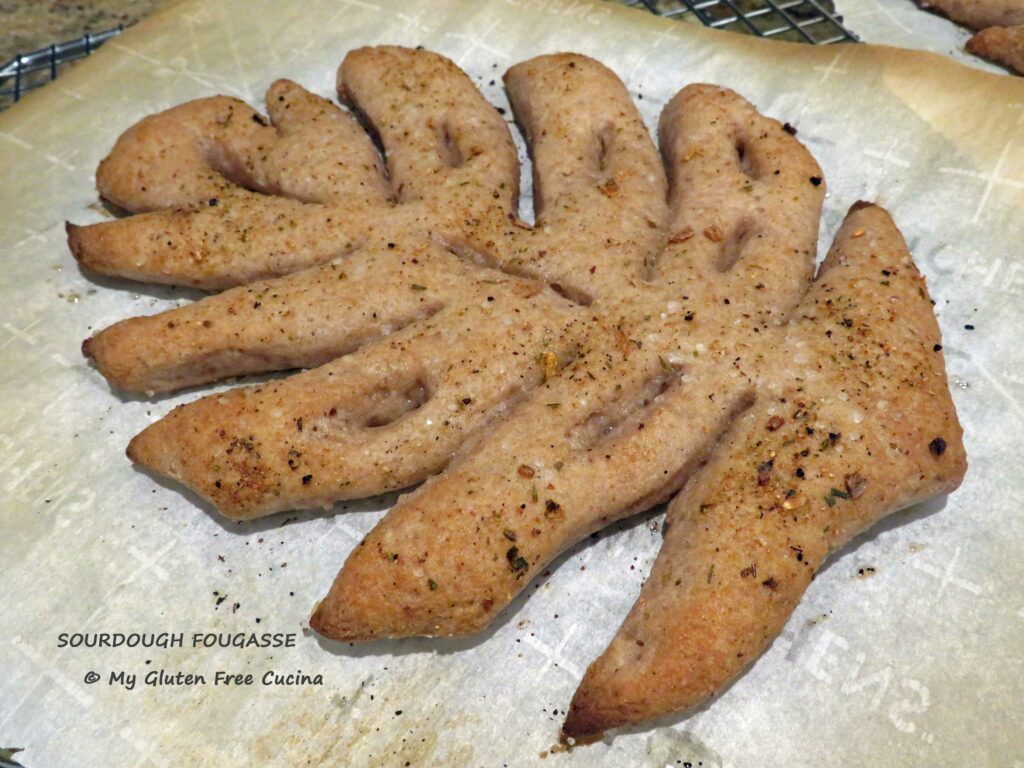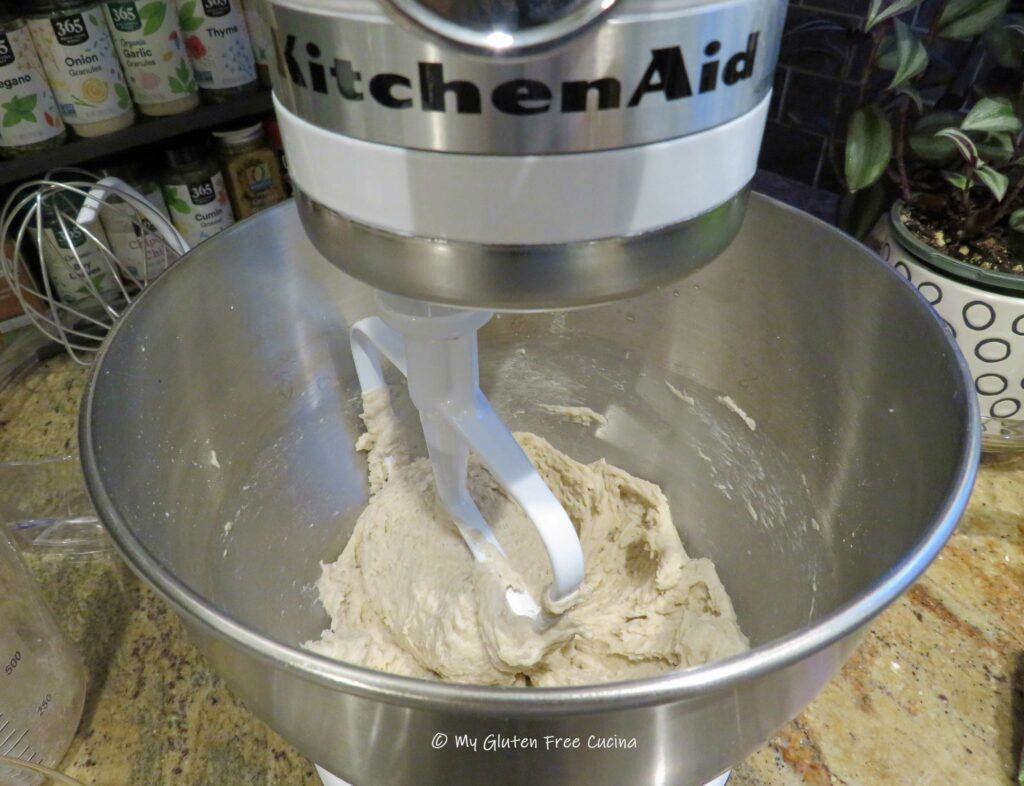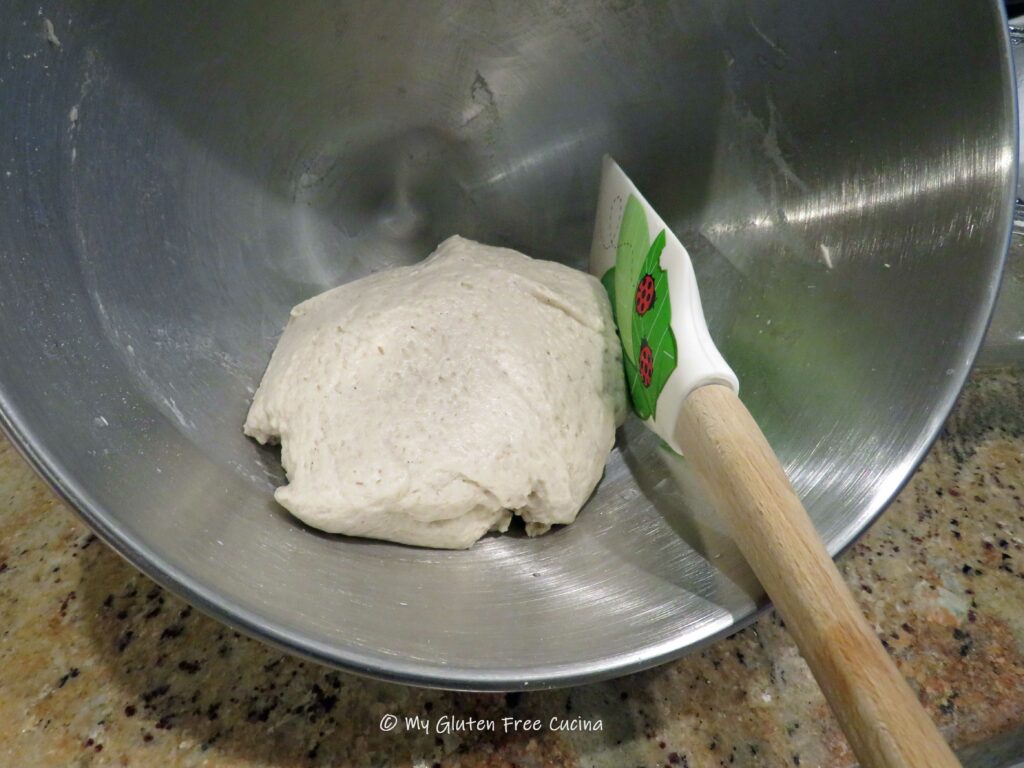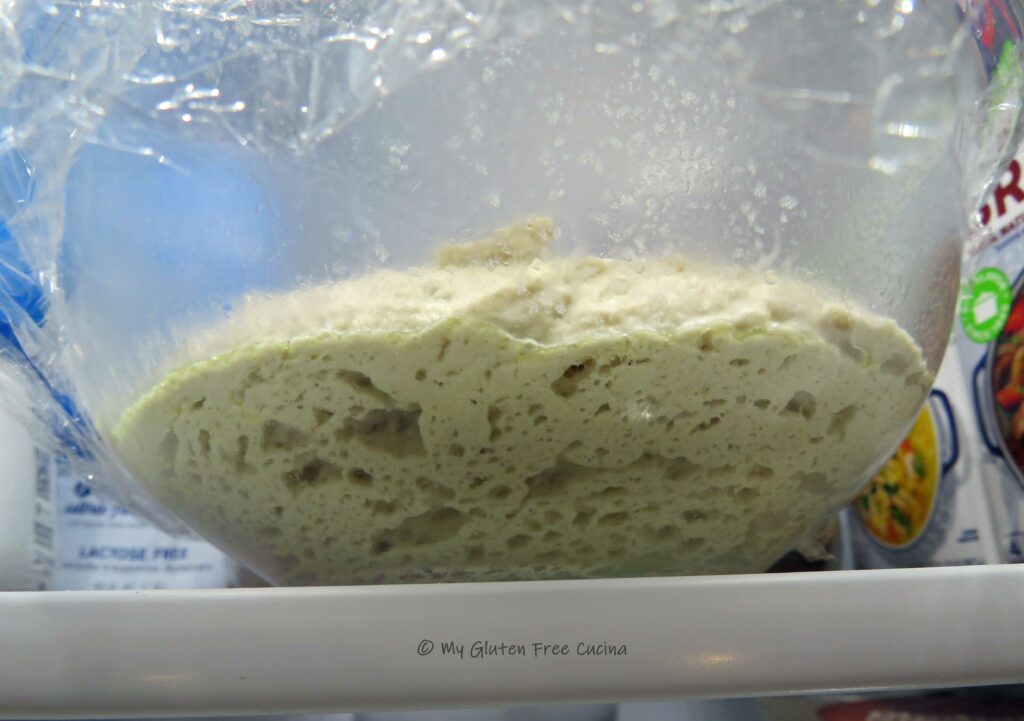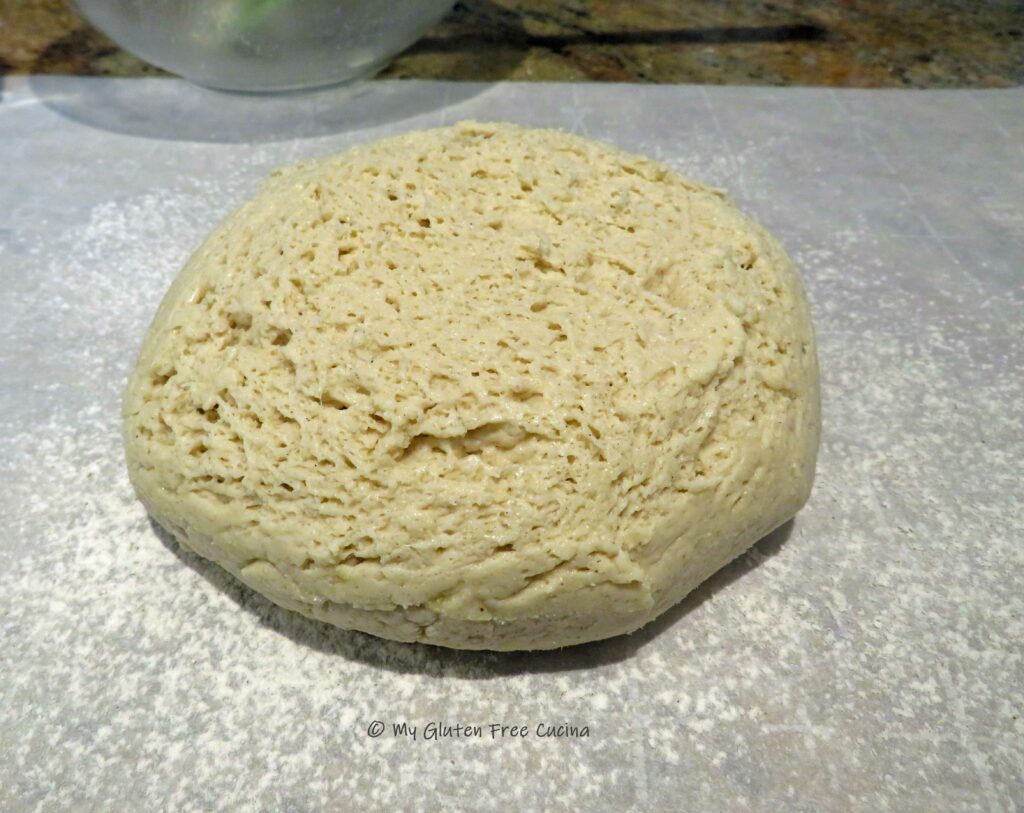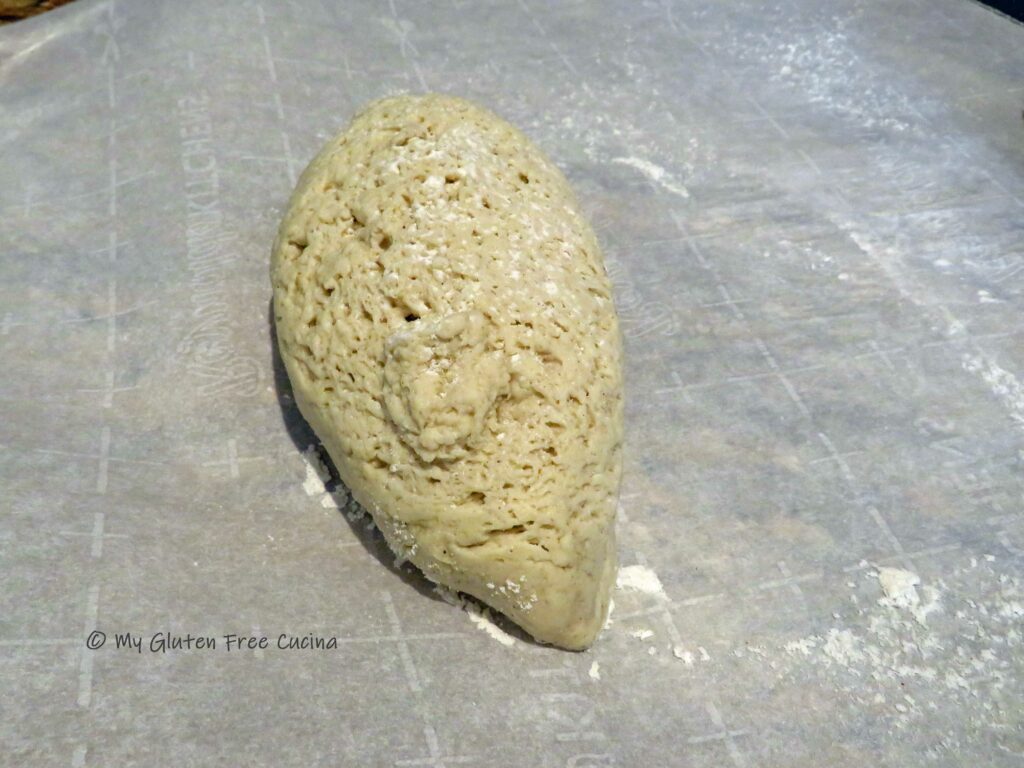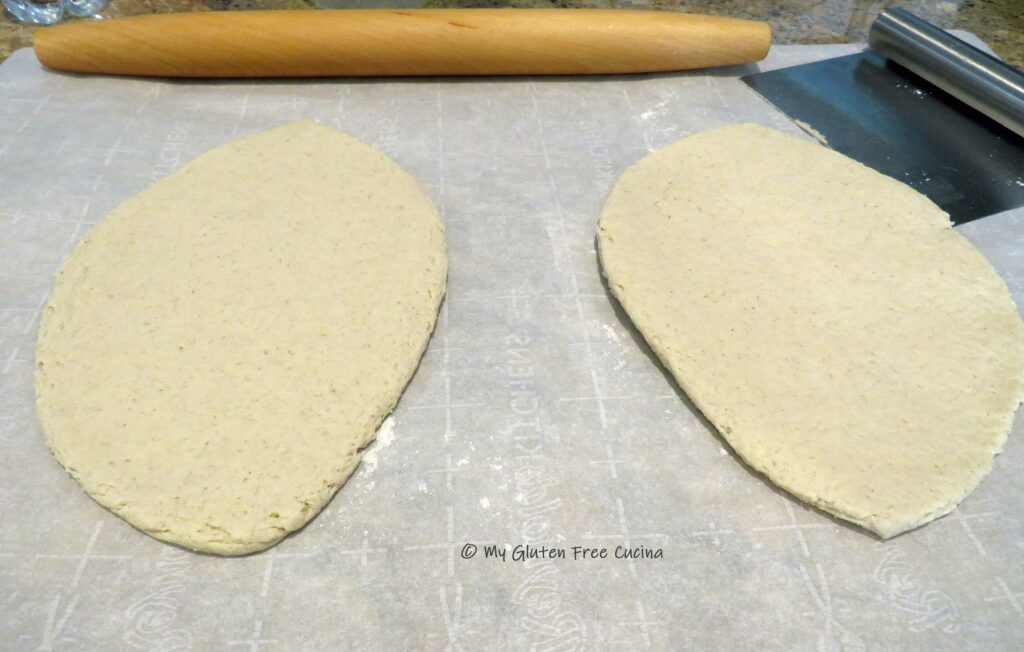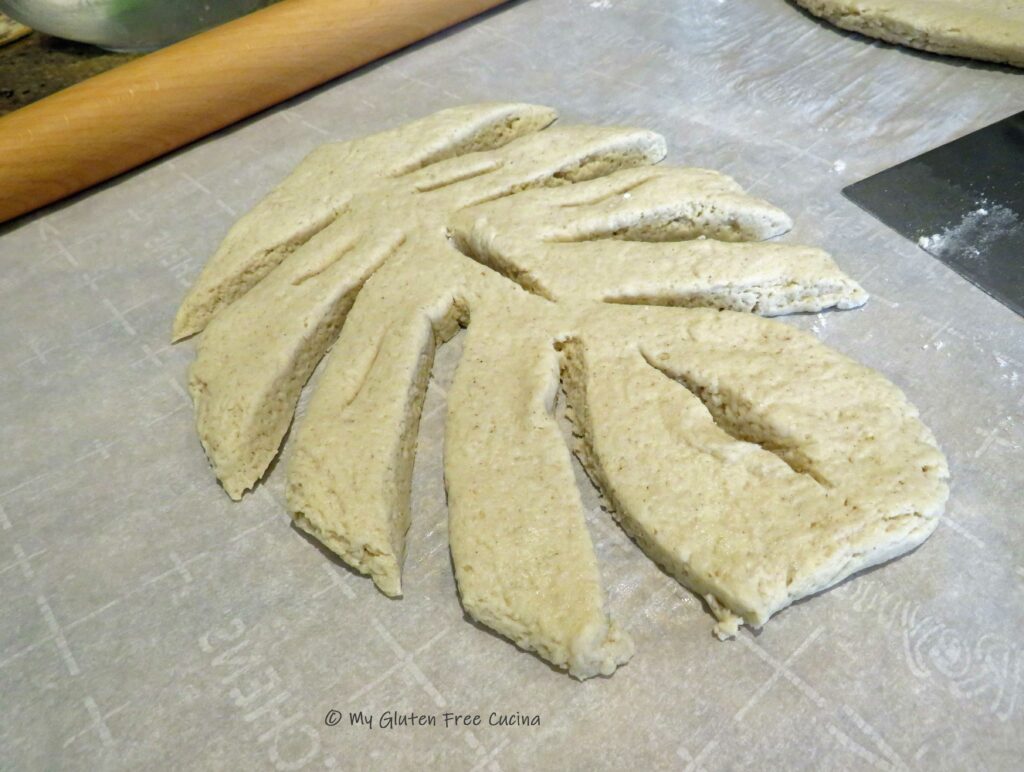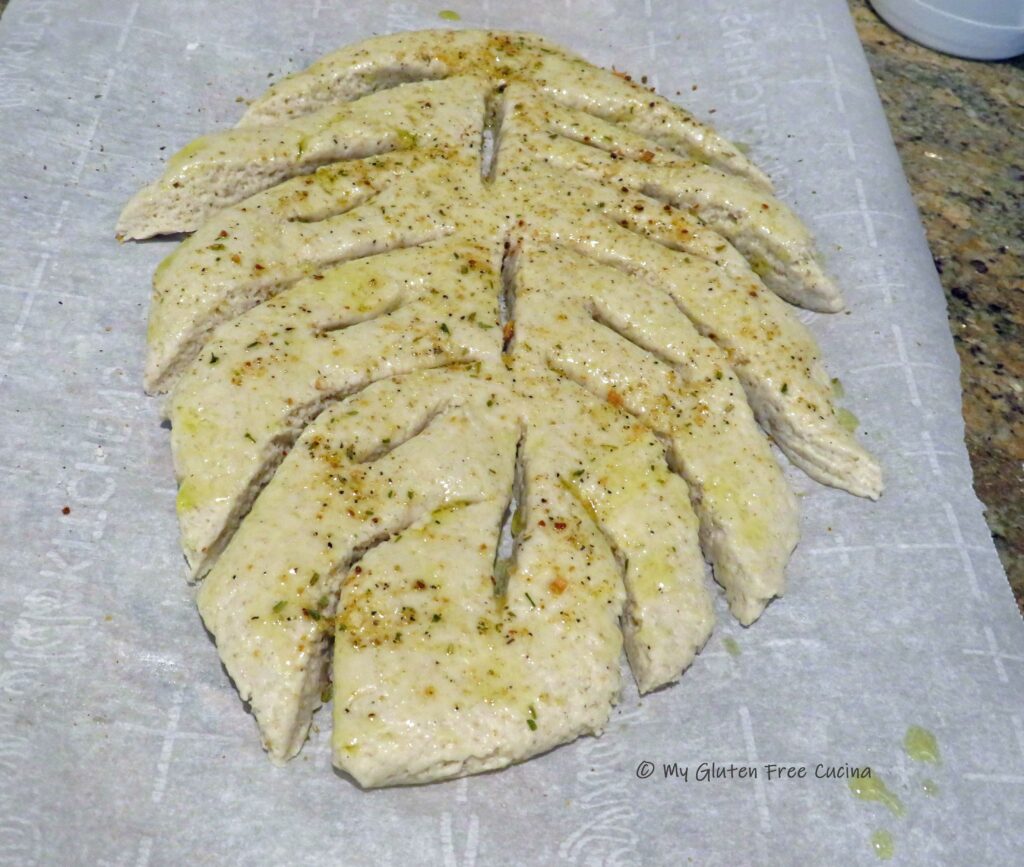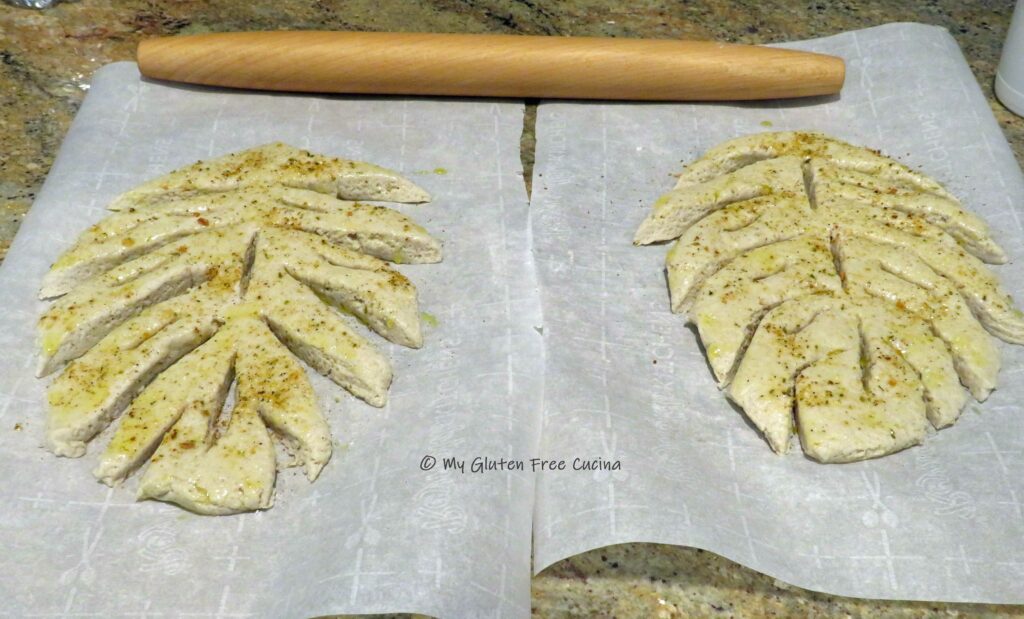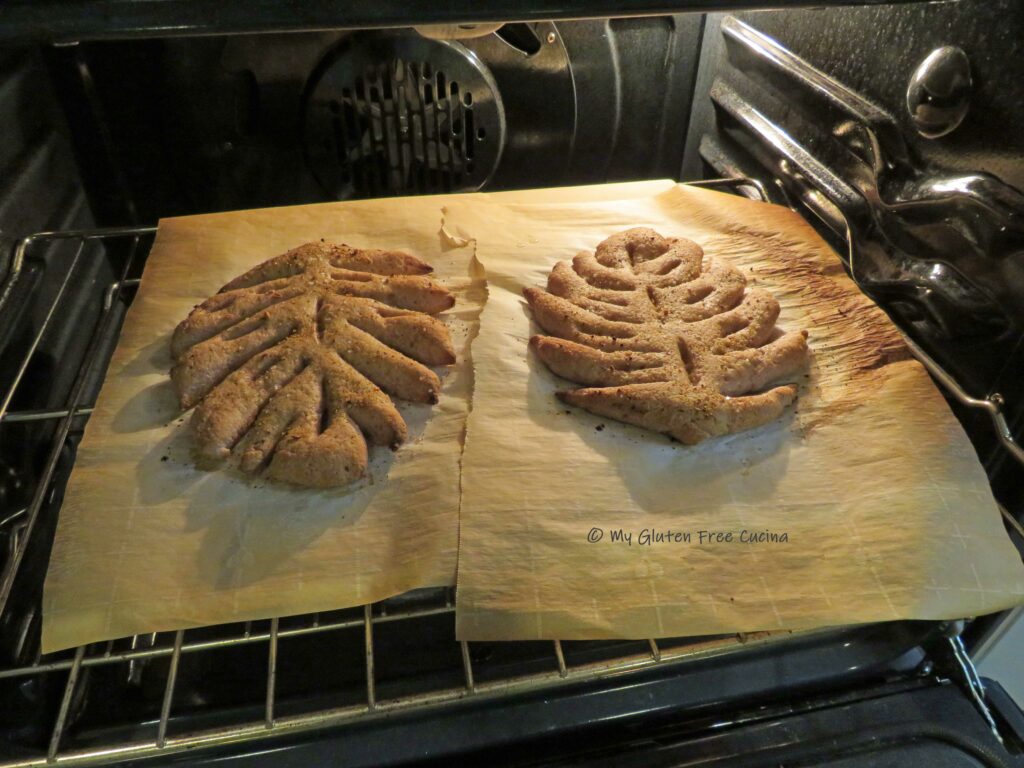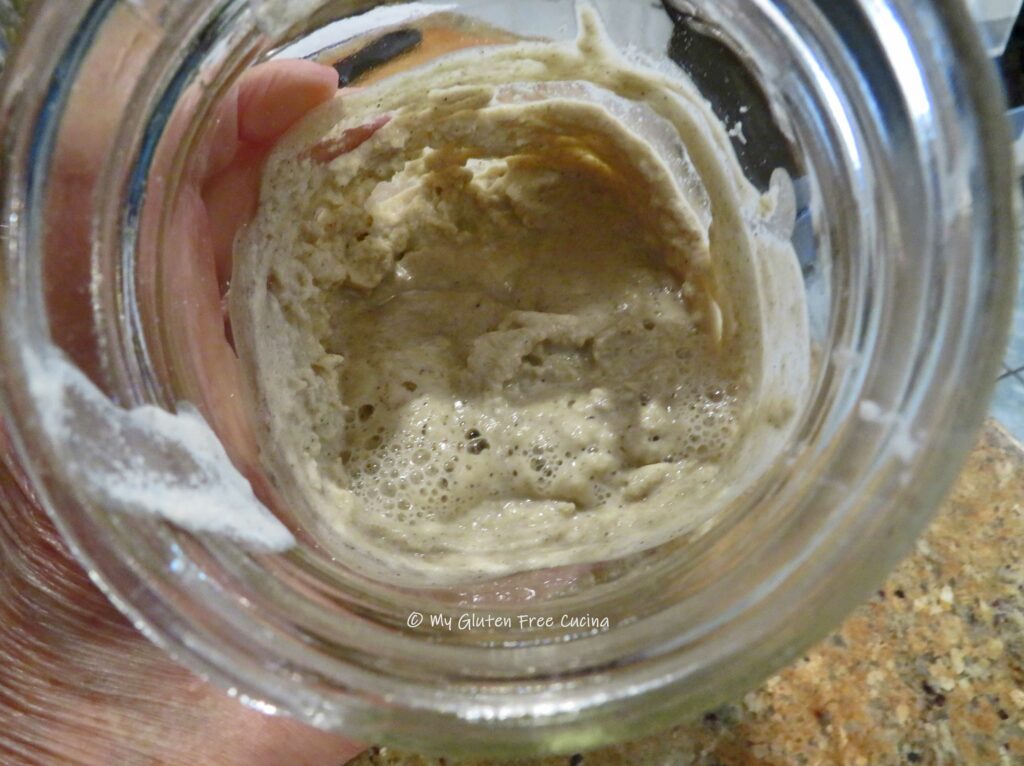What are Orecchiette?
One of my favorite pasta shapes, orecchiette are a small, cup shaped pasta said to originate in the Puglia region of southern Italy. Orecchiette means “little ears” in Italian. You can see why!

Forming this rustic pasta is easy and kid friendly, everyone will enjoy making it as much as they love to eat it. It’s a wonderful project for a Sunday afternoon, when you can take your time and enjoy the process!
A little dough goes a long way! This recipe makes plenty for two people and you can double or triple the ingredients as needed. Follow the easy steps, showing you just how to make this pasta along with the classic pairing of pancetta and peas!

Note ♪♪ I used the new Gluten Free Bread Flour from Better Batter in this recipe. Shop Better Batter and use my code MGFC30 at checkout to receive 30% off any non-sale item!
 Ingredients:
Ingredients:
For the dough
- 100g. Better Batter Gluten Free Bread Flour (+ more for shaping)
- 1 tsp. olive oil
- 1/8 tsp. salt
- 2 large eggs

To finish
- 3 tbsp. olive oil
- 2 oz. diced pancetta
- 1 cup frozen peas, defrosted
- 1/2 tsp. Italian seasoning
- pinch of red pepper flakes
- grated cheese
- fresh ground pepper
 Preparation:
Preparation:
Weigh the flour. I have tested this recipe many times to come up with exactly the right dough consistency for this pasta, and accuracy is important if you want to get the same result! Combine all of the dough ingredients in the bowl of a stand mixer. Beat with the paddle attachment for 5 minutes on low. The dough will be soft, but not wet. It should not stick to the beater.

Scrape down the sides of the bowl and bring the dough together in a ball. Wrap it in plastic wrap and let it rest at room temperature for 10-15 minutes.

Lightly flour a cutting board and divide the dough ball into 4 sections.
 Work with one section at a time, and keep the remaining dough covered so it doesn’t dry out. Start by rolling each section into a cylinder, like this.
Work with one section at a time, and keep the remaining dough covered so it doesn’t dry out. Start by rolling each section into a cylinder, like this.
 Cover and let it rest for 10 minutes. This is the secret to working with gluten free dough. Remember, it doesn’t stretch like gluten dough, but after a little rest it will be more cooperative. I repeated this process twice, before I finally was able to roll each section of dough into a rope, 3/4″ thick.
Cover and let it rest for 10 minutes. This is the secret to working with gluten free dough. Remember, it doesn’t stretch like gluten dough, but after a little rest it will be more cooperative. I repeated this process twice, before I finally was able to roll each section of dough into a rope, 3/4″ thick.
 Use a bench knife to cut the ropes into 1/2″ pieces (note- smaller is better, they will grow quite a bit when cooked!)
Use a bench knife to cut the ropes into 1/2″ pieces (note- smaller is better, they will grow quite a bit when cooked!)

Roll each piece between your palms to form round, dime sized balls. For the final shaping, use a knife to pull the dough ball toward you, like this.

Then invert it over your thumb or forefinger, to form the “ear” shape.
 Line a baking sheet with parchment or waxed paper, and dust lightly with flour. Place the finished Orecchiette on the baking sheet. Cover with plastic wrap and refrigerate if not cooking immediately.
Line a baking sheet with parchment or waxed paper, and dust lightly with flour. Place the finished Orecchiette on the baking sheet. Cover with plastic wrap and refrigerate if not cooking immediately.

To finish the dish, bring a large pot of salted water to a rolling boil. Render the pancetta in 2 tbsp. olive oil for about 5 minutes then add the peas, Italian seasoning and red pepper flakes. Cook several minutes longer, stirring frequently.

 Slide the Orecchiette into the water and cook for 3 minutes, stirring occasionally. They will float to the top.
Slide the Orecchiette into the water and cook for 3 minutes, stirring occasionally. They will float to the top.

Gently remove them with a slotted strainer and toss with the pancetta and peas.

Drizzle with more olive oil, and finish with grated cheese and some fresh ground black pepper.


Notes ♪♫ Orecchiette is one of those pasta shapes that is very hard to find in gluten free (do tell if you have spotted it!). Fortunately, they are very easy to make, and even a simple meal becomes extra special when you add fresh, homemade pasta.






